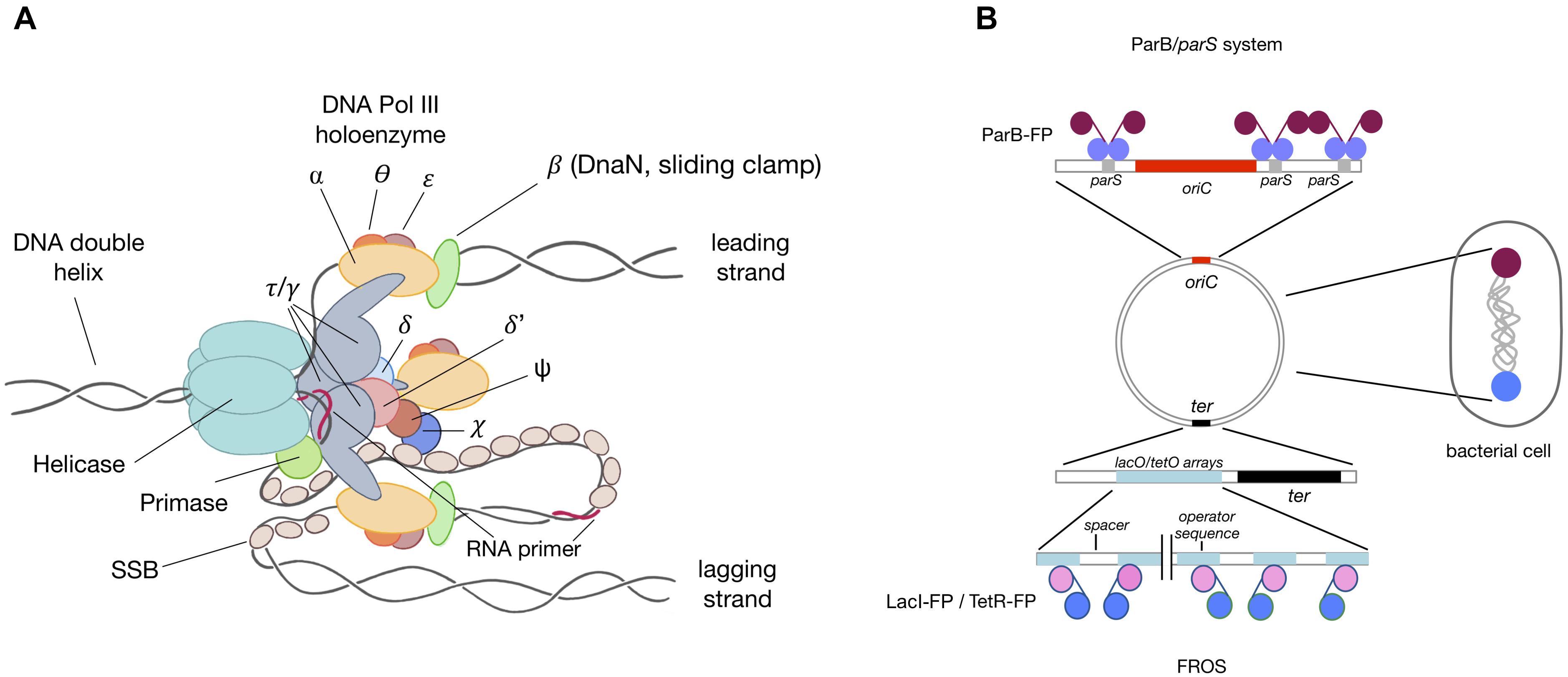Before replication can start, the dna has to be made available as template.
The progression through initiation and replisome assembly is shown at a slow pace, and each player is added sequentially. During replication process the hydrogen bonds between complimentary strands break and allow the dna helix to unzip. Eukaryotic cells on the other hand, have multiple points of origin, and use unidirectional replication within the nucleus of the cell. The sequence is different in different organisms and may be up to 300 nucleotide long. dna replication begins at the origin of replication.step 2:

During cell division in eukaryotic cells, the replicated dna is equally distributed between two daughter cells.
The sequence is different in different organisms and may be up to 300 nucleotide long. dna replication begins at the origin of replication.step 2: During replication process the hydrogen bonds between complimentary strands break and allow the dna helix to unzip. It is now known that dna pol iii is the enzyme required for dna synthesis; It is the process that can duplicate the dna of a cell. At this spot, enzymes unwind the double helix structure of the dna which makes its components accessible for replication. The cell grows and elongates. replication in prokaryotes starts from a sequence found on the chromosome called the origin of replication—the point at which the dna opens up. This problem has been solved! dna replication would not take place without enzymes that catalyze numerous steps in the process. Each step needs different enzymes. All living cells are capable of giving rise to a new generation of cells by undergoing dna replication and cell division. Coli, the replication origin is a 245 bp sequence.
The enzyme that take part in transcription is rna polymerase.during cell division the whole genome of living organism is replicated a lot of time, but transcription take place only of short portion of genome. The complete process of dna replication involves the following steps: How is dna replication in prokaryotes? Eukaryotic dna replication, also reviewed in more detail in chapter 3, "features of host cells: During cell division in eukaryotic cells, the replicated dna is equally distributed between two daughter cells.

In prokaryotes, the dna is present in cytoplasm in the form of nucleoid.
Coli, the replication origin is a 245 bp sequence. It also discusses the regulation of these. Helicase opens up the dna at the replication fork. Transcription factors in eukaryotic cells can The science practice challenge questions contain additional test questions for this section that will help you prepare for the ap exam. dna pol i is an important accessory enzyme in dna replication, and along with dna pol ii, is primarily required for repair. The main steps in dna replication is the same between eukaryotes and prokaryotes with a few differences in the enzymes used and the rate of replication. Cracking up the hydrogen bonds in the double helix is the vital. replication, transcription, posttranscriptional modification, and translation. They are known as pol α, pol β, pol γ, pol δ, and pol ε. What is dna replication in prokaryotes called why? What is the first step in eukaryotic dna replication? A replication fork is formed when helicase separates the dna strands at the origin of replication.
The steps of replication are initiation, elongation and termination and found to be common in both prokaryotes and eukaryotes. This problem has been solved! dna pol i is an important accessory enzyme in dna replication, and along with dna pol ii, is primarily required for repair. Helicase opens up the dna double helix, resulting in the formation of the replication fork. This is the process by which the genome of prokaryotic cells duplicates so that it can be transformed into a daughter cell.

Terms in this set (12)step 1:
Model for eukaryotic dna replication. This chapter describes the various processes in cells that take dna from gene to protein: During cell division in eukaryotic cells, the replicated dna is equally distributed between two daughter cells. replication in prokaryote occurs in the cell cytoplasm. Genome duplication presents a formidable enzymatic challenge, requiring the high fidelity replication of millions of bases of dna. The e.coli dna replication process, called "ori.c", consists of 245 base pairs, many of which are highly conserved among bacteria. This problem has been solved! The dna replication steps can be broken down as: dna polymerase activity polymerase will catalyze polymerization of nucleotides only in one direction (5'>3') via a phosphodiester bond between a 3' The steps of replication are initiation, elongation and termination and found to be common in both prokaryotes and eukaryotes. During cell division in eukaryotic cells, the replicated dna is equally distributed between two daughter cells. Eukaryotic dna replication, also reviewed in more detail in chapter 3, "features of host cells: It is now known that dna pol iii is the enzyme required for dna synthesis;
41+ Steps Of Dna Replication In Prokaryotes Background. The enzyme that take part in transcription is rna polymerase.during cell division the whole genome of living organism is replicated a lot of time, but transcription take place only of short portion of genome. dna replication and cell division. Terms in this set (12)step 1: Enzymes that take part in the eukaryotic dna replication process include: The cell grows and elongates.






